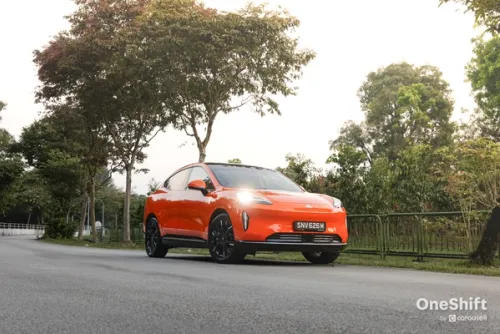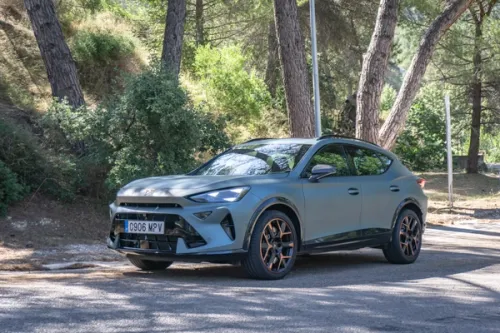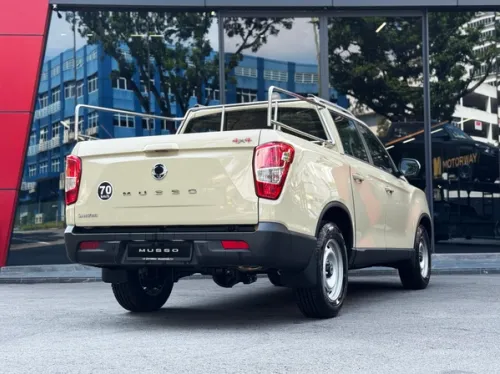Honda Stepwgn 1.5 G (A) Review
Yes, you’ve not misread, the Honda we are reviewing today is called the Stepwgn, with the vowels missing from the “wagon”, but is read as Stepwagon anyway...


Yes, you’ve not misread, the Honda we are reviewing today is called the Stepwgn, with the vowels missing from the “wagon”, but is read as Stepwagon anyway. The nameplate has actually been used since 1996, when the first generation Stepwgn was launched in Japanese markets with a chassis borrowed from the Honda Civic.
The third generation Stepwgn introduced in 2005 actually sold in fair numbers on local shores, largely thanks to its bold and attractive styling, large sliding doors, and acres of cabin space. However, the MPV was replaced in 2010 and its predecessor not sold on local shores.
New for 2015, we have the latest fifth generation Stepwgn. It appears to be a revision of the recently discontinued Stepwgn, adopting the two-box design that consists of a short nose and a huge van-like body.
The Stepwgn’s distinctive nose bears the large chrome lath that is instantly recognisable as Honda’s current corporate nose. At the rear three-quarters, there’s a distinctive and curious trough in the quarter window waistline starting at where the third row seats are, and stretches till the centre of the rear boot.
The Stepwgn’s may be a box on wheels, but the peculiar and wacky styling brings life to what would have otherwise been just another boxy MPV.
The Stepwgn’s boxy styling is not without reason, for putting up with the van-like profile, drivers and occupants will be rewarded with what Honda’s boldly claims to be a class-leading amount of interior room.
Stepping inside, the quirky theme continues. The fabric seats are in a shade of brown that appears to be very retro and reminiscent of the velour interior popular in car interiors in the ‘80s, while the little strip of white adds a touch of character and life to the cabin.
The dashboard, as one would expect, is expansive thanks to the engine and gearbox sitting beneath. With so much space on the dash, Honda has done a great job in styling it and making use of the space. The dash looks utterly contemporary and clean with a nice blend of smooth curves and right angles, incorporating some useful cubbyholes within.
Controls on the dash are well laid out, the digital instruments are easy to read and have plenty of visual appeal. The interior is pretty well made, with a mix of soft touch plastics and hard but durable plastics.
Round the back, middle row captain seats are comfortable, as are the third row seats, which by the way, can accommodate two full sized adults, or three teenagers or children. Entry into the third row is easy, one can either shuffle through the tiny corridor between the middle row seats, or slide the middle row seats forward to reveal a large opening, largely thanks to the large sliding doors.
The party piece of the Stepwgn is without doubt the boot. Called the Waku Waku Gate, the tailgate may be opened through 2 ways – by opening the whole tailgate from the bottom, or by opening a sub-door within the tailgate like how a fridge door is opened.
Boot space is impressive even with the rearmost seats up thanks to the hollow in the boot floor that these seats fold into when stored. Also, the extremely low loading lip makes loading heavy items into the boot a breeze. The Stepwgn is perhaps the most practical and family friendly large MPV around.
While competitors are using hand-me-down engines, powering the new Stepwgn is a brand new 1.5-litre direct-injected turbocharged VTEC powerplant that replaces the 2.4-litre unit in its predecessor. The new lump is good enough for 148hp and a strong 203Nm of torque, driving the wheels via Honda’s new CVT gearbox made to go together with the new engine.
Despite the large size, visibility is fairly good. On top of the niceties and brilliant features in the interior, a blind spot mirror mounted on the A pillars gives the driver a good idea of how close the front left wheels are from the kerb.
To drive, the punchy 1.5-litre turbocharged engine pulls strongly thanks to the good torque that kicks in early in the rev band, so one would not expect this car to struggle going up an incline with seven passengers on board. The Stepwgn rides well too, it’s firm but comfortable, while the drive itself feels planted and the steering is communicative.
The Stepwgn is proof that beyond adding quirky styling to draw buyers to their cars, Honda is dedicated to innovation and adding real value to their cars. The Stepwgn may be pretty much like other two-box MPVs on the outside, but it offers genuine surprises within and has a cabin that was designed by a team that perhaps many of whom have large families and drive MPVs. The Stepwgn is definitely one of our favourite MPVs, and we can’t recommend it enough.
Car review sponsored by: Autolink Holdings
Credits: Oneshift Editorial Team


Get the Best Price for your used car
from 500+ dealers in 24 hours

- Convenient and Hassle-Free
- Consumer Protection
Transparent Process
With No Obligation








